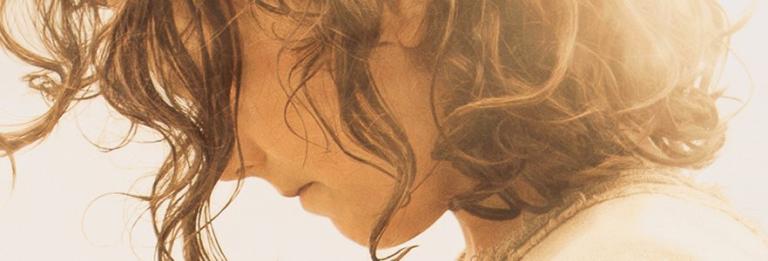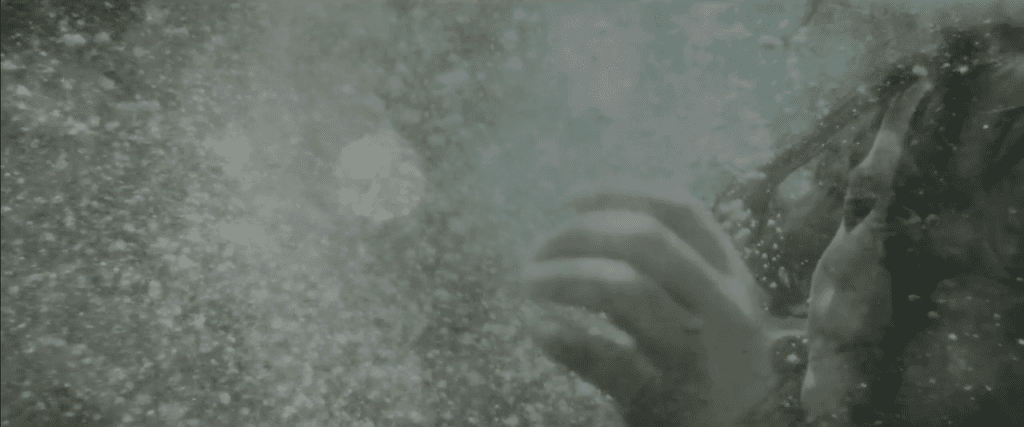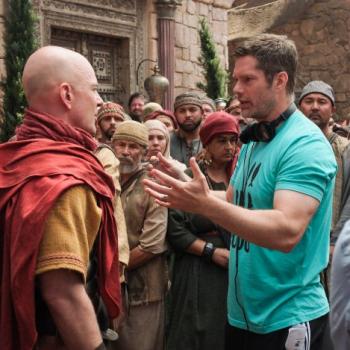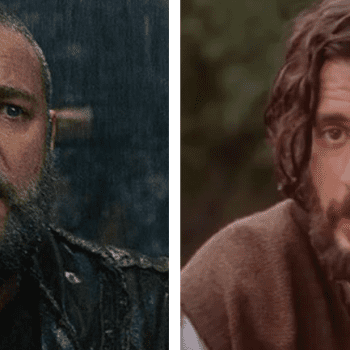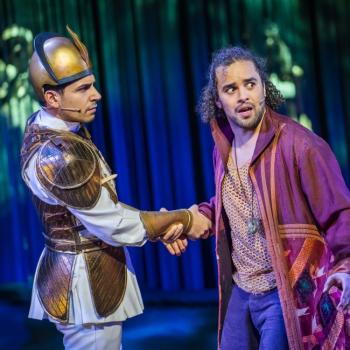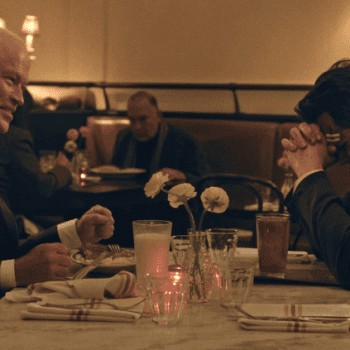At last, I have acquired a copy of the American Blu-Ray of The Young Messiah! While it doesn’t have all that many bonus features, it does have a few of them, which is more than I can say for the Canadian disc, which has none. (The American Blu-Ray also comes with a DVD copy of the film, which the Canadian Blu-Ray does not.)
The bonus features include a 10-minute featurette on the making of the film and about seven minutes of deleted scenes, none of which add all that much to the story.
But the disc also has an informative audio commentary by director Cyrus Nowrasteh and his wife/co-writer Betsy Giffen Nowrasteh. While they cover some of the same points that they’ve made in interviews and featurettes etc., they also make some points that were new to me, and which are worth drawing attention to. Here are four:
— My favorite, by far, is the point Betsy makes about the miracle in the river, when Jesus heals his uncle Cleopas. Many people have noted that, as Jesus and Cleopas both go under the water, the scene plays like a baptism — but Betsy notes that the way the scene was shot has overtones of rebirth, as the characters are filmed in a way that resembles an “intrauterine, amniotic, pre-natal state.” Just consider this image:
— In my scene guide on the film, I noted that the film never specifies which Herod is giving Severus his orders, and I speculated that he might be an amalgamation of Archelaus (who was ruling Judea at this time) and Antipas (who was ruling Galilee, and who famously got his stepdaughter Salome to dance for him; the film’s Herod has a dancer with the similar name Selini). But Betsy says in the commentary that the Herod of the film is Archelaus, and that she and Cyrus didn’t know how “nuts” the real-life Archelaus was until after they had written the character. (Betsy also states that Antipas became ruler of all Judea eventually, but I do not believe this is accurate; the kingdom of Herod the Great was divided between his sons when he died, and it was not reunited until his grandson Agrippa I took the throne decades later.)
— Betsy notes that Jesus’ older brother James tells Jesus about the Magi in much the same way that older siblings today tell their younger siblings that Santa Claus is a myth; in both cases, the older sibling spoils a secret that the parents have been keeping from the younger ones. One key difference, of course, is that the secret shared by James points to a mystical truth about Jesus, whereas the secret that children tell each other about Santa Claus is essentially demystifying and exposes a lie.
— Betsy notes that the scene near the end of the film, in which Mary finally tells Jesus where he came from, takes place in the Garden of Gethsemane — which is a subtext that had never occurred to me. (If Anne Rice placed this scene there in her novel, I forgot it.) In any case, the scene does take place in an olive grove outside Jerusalem, before the family embarks on its journey back to Nazareth, so that makes sense.
One last note: As I watched the film and listened to the commentary, I was reminded once again of how good the music (by John Debney) and the cinematography (by Joel Ransom) are. I might not be persuaded by every dramatic choice the filmmakers made, but as far as production value goes, this film easily outclasses the other movies I’ve seen about Jesus’ childhood. It’s too bad it didn’t find a bigger audience.


